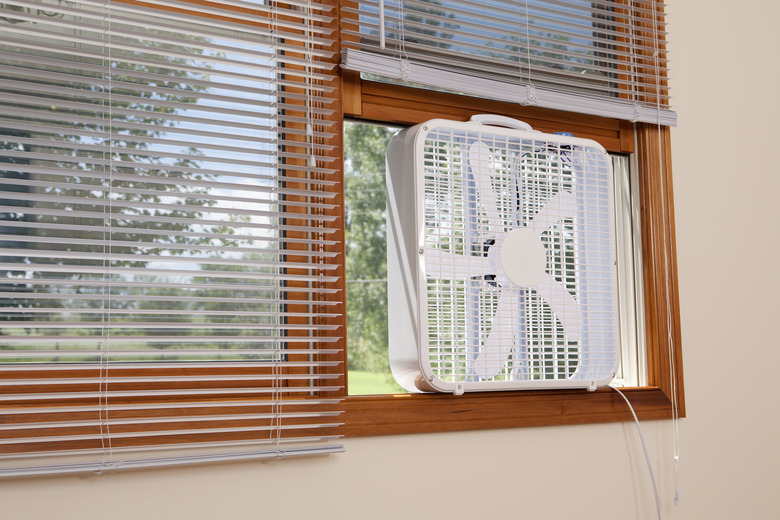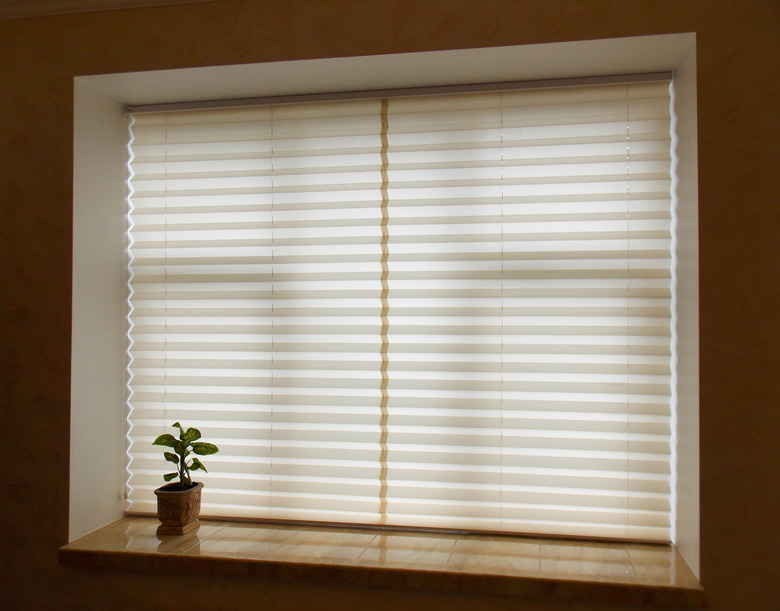Should A Box Fan Be Facing In Or Out Of A Window?
A box fan is a good option for placing in a window because its a flat-sided, shallow unit that can sit on a window sill without sticking out into the room. It's also relatively powerful and can pull air through a window (or push it out of a window) better than most other fans — with the exception of fans made to fit inside window frames. But using a box fan raises an ongoing debate among homeowners: should a box fan in widow face out or face in?
There are both short and long answers to this question. Here's the short answer: If the outside air is cooler than the indoor air, a box fan will cool the room or house whether it's facing in or facing out, but getting the most cooling effect depends on the situation. That's where the long answer comes in, and we'll cover that here.
How Does a Fan Cool Your House?
How Does a Fan Cool Your House?
A box fan in a window works like a poor man's whole-house fan (a.k.a. attic fan), by sending warm indoor air outside and bringing cool outdoor air in. This airflow is called air exchange and follows the same principle that makes bathroom vent exhaust fans work: as stale, moist air is sucked out of the bathroom, it is replaced with an equal amount of fresh air, or at least dryer air from adjacent areas of the house.
Air is a gas that completely fills any unsealed container, including a house. If you put a fan in a window blowing in, the air that's pulled in displaces the air that's already in the house, forcing the indoor air outside through any available passage, such as an open window or tiny gaps around a door. It's a one-in/one-out rule.
Conversely, a fan blowing out of a window sucks the indoor air out of the house, and this air must be replaced by the same amount of outdoor air. Closing all your windows and doors won't prevent this exchange: one in, one out.
With this scientific rule in mind, it makes sense that you can cool a house with fans only when the outdoor air is cooler than the indoor air. The rule also explains why a fan cools a house whether it's facing in or out, through air displacement or air exchange. And you'll get the best results if you open doors and windows while running the fan to facilitate air exchange.
When In Doubt, Blow Out
When In Doubt, Blow Out
We'll spare you the science lesson this time. As a rule of thumb, it works better to cool a hot house with the air blowing out rather than blowing in. This is especially true if you have a basement or a multistory house and you place the fan in an upstairs window and open the windows or doors on the lowest level. This quickly gets rid of the upper-level air, which is the hottest, and replaces it with air from the lower level, which is relatively cool.
An exception to this rule of thumb occurs when you're sitting directly in front of the fan and you're more interested in cooling yourself than the house. Air movement over your skin helps your body release heat, so sitting in front of a fan blowing in cools you in two ways.
When Not to Use a Window Fan
When Not to Use a Window Fan
Due to the one-in/one-out air exchange rule, there's no point in using a box fan as a window fan when the outdoor temperature isn't lower than the indoor temperature. Facing the fan out will suck some hot air from the house, but it will quickly create a vacuum that pulls outdoor air back in.
When there's no cool air to bring in, leave the window closed and set the box fan where it blows directly onto you. This promotes evaporation of sweat from your skin, which is how the body naturally cools itself. It's also the primary way that any type of air circulator fan — including ceiling fans, floor fans, oscillating fans, tower fans, desk fans, etc. — cools you down. They don't cool the air; they only help you cool yourself.
Window Fans for Cross-Ventilation
Window Fans for Cross-Ventilation
Air coming into a house through one window and leaving through another window is a form of cross-ventilation. This cools a space best when the windows are on opposite sides of a room or house, or on upper and lower levels. To turbo-charge cross-ventilation, place one box fan in a window to blow air out, and place a second fan in another window to pull air in.
If you have a multistory home, the higher fan should blow out and the lower fan should blow in. Or, if one side of the house is warmer, such as the west side just before or after sunset, the fan should blow out on that side, while the other fan should blow in on the cooler side of the house.
How to Keep Your House Cool Without Air Conditioning
How to Keep Your House Cool Without Air Conditioning
If you're using a box fan in the window, you probably do not have an air conditioner, or maybe you do and you prefer not to run it all the time because it's expensive or you're trying to reduce your carbon footprint. Whatever the reason, here's the basic DIY strategy for keeping your indoor thermostat reading as low as possible during the heat of summer:
- Open windows and doors in the evening as soon as the outdoor temperature drops below your indoor thermostat reading, to let the warm air out and the cool air in.
- Place box fans in windows to maximize air exchange throughout the house. Prioritize getting rid of the hot air; remember: hot air out = cool air in.
- Leave the fan(s) running and the window(s) open all night, as long as it's safe to do so (you don't want to risk safety for comfort). Otherwise, close everything up just before going to bed.
- Open the windows (if you closed them) and run the fans first thing in the morning.
- Stop the fans and close up the house as soon as the outdoor air is noticeably warmer. If you wait too long to close up, you'll lose all the cooling you achieved.
- Cover all windows that get direct sunlight. If you have uninsulated windows, it'll help to also use insulated shades on all windows that bring in heat. Keep windows and doors closed as long as the indoor temperature is lower than the outdoor temperature.


